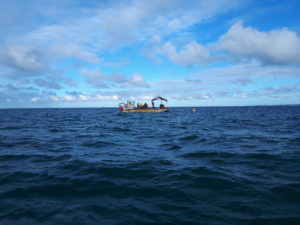Assessing the potential for moving bivalve aquaculture to new offshore sites and for integrating novel species into future cultivation

The French case study led by the University of Nantes is located in Bourgneuf Bay on the French Atlantic coast, just south of the Loire estuary. With a long history and extensive coverage in the intertidal zone of the bay, bivalve aquaculture (notably of Pacific oyster, Crassostrea gigas, and blue mussel, Mytilus edulis) is great economic and cultural importance. In recent years, farmers have been interested in adapting and expanding production, and research within this TAPAS case study supports them in assessing the potential for moving bivalve aquaculture to new offshore sites and for integrating novel species into future cultivation.
Experiments as part of TAPAS Work Package 4 (Ecosystem services and Societal models) have investigated the feasibility of sea urchin (Paracentrotus lividus) co-production with oysters. In Work Package 5 (Near-field models for regulation and site selection), validated satellite-retrieved (MERIS) sea surface temperature, total suspended matter, and chlorophyll-a products were used to drive dynamic energy budget (DEB) growth models for C. gigas. Model results allow growth to be mapped in the intertidal and offshore environments, and inform site selection within the bay. This approach, coupling spatialized environmental parameters with growth models, is scaled up in both space and time in Work Package 6 (Climatologies, risks, regional potential); input data for present-day conditions as well as various future (ca. 2100) climate scenarios drive growth modeling at the pan-European scale. Additional in situ data have been collected for this case study as part of Work Package 7 (Monitoring and Validation), to develop methods and extend satellite-based monitoring and modeling to currently-available high-resolution (e.g., Sentinel-2 MSI) data.


